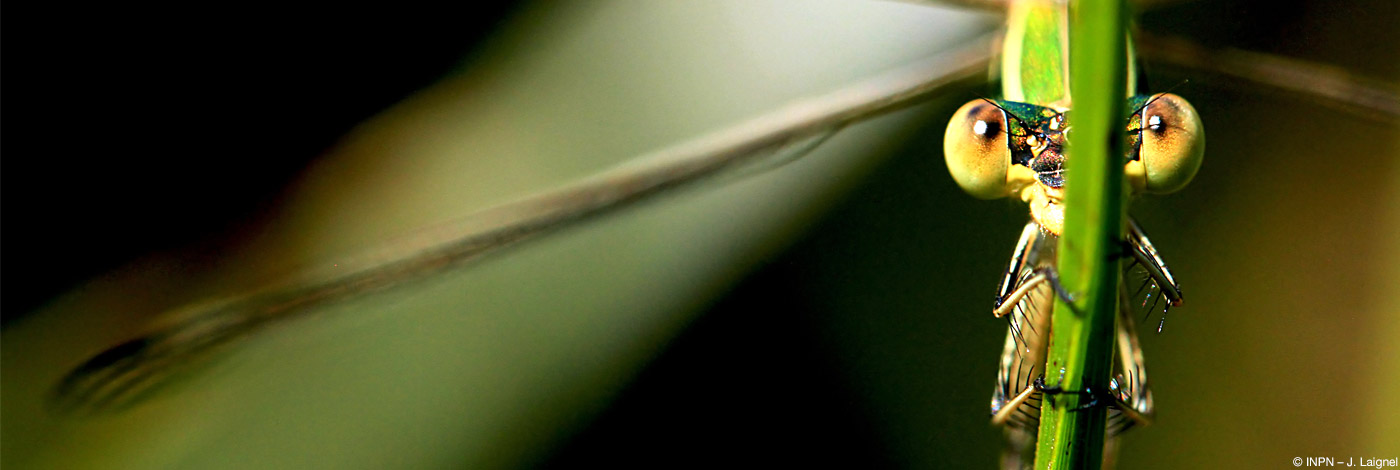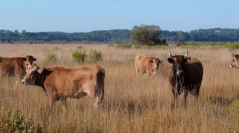

 Naturae
2023 (3) - Pages 35-45
Naturae
2023 (3) - Pages 35-45Large herbivores can influence vegetation both indirectly, via their effects on plant community composition and soil nutrient cycling, and directly, through consumption of parts of the plants. In order to quantify these effects, standardized experimental set up in natural areas is needed to monitor large herbivore re-introductions. The conservation program of the Marine landaise cow breed aimed to preserve this domestic breed while managing and restoring wet meadows on the Landes plateau (Nouvelle-Aquitaine region, France). In 2019, an experimental set up was deployed to monitor the effects of the Marine landaise cow breed. This monitoring set up is of a novel type, since it integrated three key components of the ecosystem (the plant Community, the dominant plant Population, and the Soil [CPS, hereafter]) through the survey of vascular vegetation, the characterization of biological traits of the dominant plant population (Molinia caerulea (L.) Moench), and the measurement of physicochemical parameters of the soil. The initial measurements carried out in the CPS set-up showed a perfect homogeneity in the initial properties of the plot before the effect of grazing exclusion. No significant differences in plant community structure (biodiversity), M. caerulea characteristics (necromass, leaf traits), and edaphic parameters (pH, carbon, nutrients) were found between the grazed and ungrazed plots at the set-up. These results suggest that with the absence of initial bias in the monitoring plots, the CPS set-up can be generalized and adapted to allow monitoring pastoralism in natural areas, much more precise than usual vegetation surveys.